There is absolutely no doubt, as anyone with a good working dog will know, that they can be worth their weight in gold.
Growing up, I often wished we had such a dog on the farm at home but with myself and two younger brothers to send ‘away’ and ‘come by’, it was always deemed unnecessary by the boss who also happened to be the ‘driver of the jeep’!
Traditionally, the working farm dog has been the Border Collie and this is still the case today, although other ‘herding breeds’ are occasionally used in this country, such as the New Zealand Huntaway and the Australian Kelpie.
The Border Collie originated from the Northumberland area on the England/Scotland border. The word ‘collie’, is an old Scottish term meaning ‘useful’, therefore a ‘collie dog’ is a ‘useful dog’ and put the two together and you have a name that simply means, ‘useful dog from the borders’.
The world record price paid for a working sheepdog was recorded last year in North Yorkshire, where a 15-month-old Border Collie dog sold for £9,240 (€10,774).
A good dog can be expensive and hard to replace and, therefore, as with any piece of essential kit on the farm should be well maintained and looked after.
As with any dog whether a pet or a working dog, the important things to consider healthwise are:
Vaccination
Parasite control (worming and flea control)
DietVACCINATION
Dogs are routinely vaccinated against a number of serious, life-threatening diseases in one vaccine:
Canine distemperCanine parvovirusInfectious canine hepatitisLeptospirosisPara influenzaPups can be vaccinated in certain circumstances fromas young as six weeks but, normally, the first injection is given at eight weeks.
A second injection is given two weeks after the first and completes the primary course.
Full immunity is not developed, however, until one week after the second injection, so the earliest a pup can be safely taken to public places and mixed with other dogs is 11 weeks of age.
To maintain the protection, an annual booster is required, which is usually combined with a general health check by your vet.
An intranasal vaccine is available which protects against kennel cough, a highly contagious although not normally life threatening disease.
It should be considered if your dog is mixing a lot with other dogs at shows or trials.
PARASITE CONTROL WORMING
Dogs can be affected by several different types of parasitic worm but of main concern are roundworms (highly prevalent in pups) and tapeworms (common ins older dogs).
It is important to worm your dog regularly throughout its life as (especially in young animals) severe infestation can cause serious illness.
It is also important to consider the health risk to humans and, in particular, children where roundworm infection can cause blindness and other serious illness.
Pups should be wormed every two weeks until they are 12 weeks old and then every month until six months of age, thereafter every three months throughout adulthood.
Wormers are normally administered in tablet form based on your dog’s weight.
The most effective productsare available from your vet.
FLEA CONTROL
Most dogs will get fleas at some point, most commonlyin summer. Again, prevention
is better than cure as fleas can cause dogs a lot of irritation, set off an allergic reaction in the skin and in severe infestations cause anaemia.
Fleas can also contribute to tapeworm infestation if the dog swallows a flea containing immature tapeworm stages.
Regular treatment is recommended and, depending on the product, is normally given every one to two months.
There are numerous products available to treat and prevent fleas, and again, the most effective and long lasting treatments are available from your vet.
DIET
The importance of providing the working dog with a good, well balanced diet cannot be over stressed. They are the canine equivalent of a professional endurance athlete covering great distances at speed over prolonged periods of time and should be fed accordingly.
Energy needs will vary according to the amount of work the dog is expected to do each day. To get the best out of your dog, attention needs to be paid to the quality and quantity of the food given. On a day with a heavy workload, the dog will require a higher level of protein and other nutrients than it would on a day off and, therefore, the diet needs to be boosted on these occasions.
This does not necessarily mean that the dog will need more food on these days but that the nutritional value of the food given needs to be greater.
Basic ‘maintenance’ diet needs should be supplied with a protein/oil/carbohydrate and vitamin/mineral balance that will give the dog everything it needs equivalent to a ‘day off ’ for a working dog and an average day for a pet.
Typically, this diet may have around 20% protein, 10% oils and fats, 2.5% to 5% fibre and about 6% ash with adequate vitamin and mineral content.
On working days, a proportion of this diet is replaced by a compatible food with higher nutrient concentrations, particularly in the areas of protein and oils as the dog will require more of these nutrients when exercising hard.
The effect of this method is to provide the extra energy needed at the time it is required without stressing the dog’s system and natural reserves of energy. The dog will feel and perform better.
Bitches in pup are also working harder than average and require a boost to the basic ‘maintenance’ diet during their term and during the first few weeks after the birth.
Again, proper diet will provide the nutrients required at the time assisting in a stronger bitch that carries better to full term and providing the pups with a better start and better resistance to infection.
The mother will also recover sooner as it will not have needed to use its reserves of energy to carry and feed the litter. Puppies themselves have the need of high levels of protein in their diet immediately after weaning.
This initial high level should be reduced as they grow. Dog foods come in stages — puppy, junior, adult and senior — with nutrient levels adjusted to suit the maturity and physical needs of dogs of different ages. This system is a proven science and, like crop rotation, it improves results.
Good health and energy levels (coupled with good husbandry in accommodation) will improve the chances that the dog will have a long working life and be less prone to premature problems of ageing that are so common and crippling in poorly kept dogs.
There are many dog foods on the market and in many forms, although I would recommend a dried extruded food (e.g. nut) which have certain advantages.
The nutrients are distributed evenly throughout the food and there is no danger of different nutrient sources settling out into layers in the bag during transportation as in s a flake food mix.
They are also convenient to feed, highly digestible and easy to calculate exactly how much is required.
Any complete diet changes should be done gradually over a few days by replacing a proportion of the food the dog is used to with an increasing amount of the new food, but the introduction of a proportion of compatible ‘high nutrient’ food on working days should not upset the dogs digestion.
Your dog should have access to fresh clean water at all times, especially if being fed any type of dried food (these can be soaked beforehand, if required).
Dehydration weakens a dog far quicker than starvation or poor diet and also affects the dog’s ability to keep cool in hot weather so in these conditions and especially when working, keep the water freely available.
OCCUPATIONAL HAZARDS
Compared with dogs kept as family pets, the working dog on the farm will be exposed to many more hazardous situations on a day-to-day basis.
This can unfortunately predispose them to certain injuries and illnesses.
Heat stroke/heat exhaustion: This is a very serious condition that can rapidly cause serious damage and even death. Dogs do not sweat through their skin as we do. They release heat primarily by panting and sweat through their foot pads and nose. Be wary of over working your dogs in very warm weather and always make sure they have access to water.
Being run over: The farm can be a very dangerous place with large agricultural vehicles coming and going. If your dog is not working, make sure it is put away somewhere safe or restrained out of harms way. If the dog is working, be aware of its whereabouts at all times if you are in a vehicle and anticipate its next move.
Burnt feet pads:This can occur during hot weather on dry ground or during a lot of road work.
Spinal injuries: Often, a lameness or refusal to go one way can indicate a less than obvious spinal injury. Getting caught on a fence for example or leads incorrectly used (e.g. a dog put on a lead for the first time if never used to one) can cause them to flip about violently and risk injury to their spine.
Broken legs, dislocated hips and cruciate ligament rupture: Jumping fences, cattle kicks, crushed against walls by charging sheep, getting caught in fences, turning too sharply at speed and falling/jumping off a quad bike travelling at speed are just a few of the more common causes of these potentially career ending injuries.
Poisoning: Again, on the farm, the working farm dog will potentially have an increased risk of exposure to, for example rat poisons, foot bath treatments and anti-freeze. Poisoning is entirely preventable by proper storage and protection from the dog.
Hanging on a chain: A lot of working dogs are chained when not at work. Be very aware of the length of chain and the siting to prevent the dog jumping over an obstacle or wall with an inadequate length of chain to reach the other side.
BREEDING
Breeding a working dog is not something that should be taken lightly. Reputable breeders can study the genetics of up to seven generations of ancestors before mating two dogs to breed for essential compatibility.
Hips, eyes, elbow and temperament problems are creeping into the lines of the present day Border Collie, as a result of people breeding with their dogs without having sufficient knowledge of the line of ancestors they have used.
Ideally, all breeding animals should be screened before breeding for possible hereditary defects. The dog or bitch may be carrying genes that predispose to certain conditions and may not necessarily show any signs of the disease themselves.
The major problems as regards hereditary diseases faced by the Border Collie are:
Progressive retinal atrophy leads to a progressive loss of sight.Collie eye anomaly affects pups from birth, leading to loss of sight or in severe cases pups can be born blind.Hip dysplasia will lead to early onset of arthritis in the hips and a working dog with arthritic changes is neither going to want nor be able to work well.Osteochondrosis dissecans is a disease of the cartilage of a joint and affects pups between four and 12 months of age. The elbow and shoulder joints are most frequently affected.Epilepsy causes seizures, convulsions or fits beginning between one and four years of age.So, think carefully before being tempted to breed as it is not as simple as putting a nice looking dog to a nice looking bitch or mating two dogs because one or both have won prizes.
*Ruth Hastings is a general practitioner at Nithsdale Veterinary Surgery, Dumfries, Scotland. This aritcle was first published by the Irish Farmers Journal 12 May 2012 and has been updated with the most recent information.
There is absolutely no doubt, as anyone with a good working dog will know, that they can be worth their weight in gold.
Growing up, I often wished we had such a dog on the farm at home but with myself and two younger brothers to send ‘away’ and ‘come by’, it was always deemed unnecessary by the boss who also happened to be the ‘driver of the jeep’!
Traditionally, the working farm dog has been the Border Collie and this is still the case today, although other ‘herding breeds’ are occasionally used in this country, such as the New Zealand Huntaway and the Australian Kelpie.
The Border Collie originated from the Northumberland area on the England/Scotland border. The word ‘collie’, is an old Scottish term meaning ‘useful’, therefore a ‘collie dog’ is a ‘useful dog’ and put the two together and you have a name that simply means, ‘useful dog from the borders’.
The world record price paid for a working sheepdog was recorded last year in North Yorkshire, where a 15-month-old Border Collie dog sold for £9,240 (€10,774).
A good dog can be expensive and hard to replace and, therefore, as with any piece of essential kit on the farm should be well maintained and looked after.
As with any dog whether a pet or a working dog, the important things to consider healthwise are:
VaccinationParasite control (worming and flea control)
DietVACCINATION
Dogs are routinely vaccinated against a number of serious, life-threatening diseases in one vaccine:
Canine distemperCanine parvovirusInfectious canine hepatitisLeptospirosisPara influenzaPups can be vaccinated in certain circumstances fromas young as six weeks but, normally, the first injection is given at eight weeks.
A second injection is given two weeks after the first and completes the primary course.
Full immunity is not developed, however, until one week after the second injection, so the earliest a pup can be safely taken to public places and mixed with other dogs is 11 weeks of age.
To maintain the protection, an annual booster is required, which is usually combined with a general health check by your vet.
An intranasal vaccine is available which protects against kennel cough, a highly contagious although not normally life threatening disease.
It should be considered if your dog is mixing a lot with other dogs at shows or trials.
PARASITE CONTROL WORMING
Dogs can be affected by several different types of parasitic worm but of main concern are roundworms (highly prevalent in pups) and tapeworms (common ins older dogs).
It is important to worm your dog regularly throughout its life as (especially in young animals) severe infestation can cause serious illness.
It is also important to consider the health risk to humans and, in particular, children where roundworm infection can cause blindness and other serious illness.
Pups should be wormed every two weeks until they are 12 weeks old and then every month until six months of age, thereafter every three months throughout adulthood.
Wormers are normally administered in tablet form based on your dog’s weight.
The most effective productsare available from your vet.
FLEA CONTROL
Most dogs will get fleas at some point, most commonlyin summer. Again, prevention
is better than cure as fleas can cause dogs a lot of irritation, set off an allergic reaction in the skin and in severe infestations cause anaemia.
Fleas can also contribute to tapeworm infestation if the dog swallows a flea containing immature tapeworm stages.
Regular treatment is recommended and, depending on the product, is normally given every one to two months.
There are numerous products available to treat and prevent fleas, and again, the most effective and long lasting treatments are available from your vet.
DIET
The importance of providing the working dog with a good, well balanced diet cannot be over stressed. They are the canine equivalent of a professional endurance athlete covering great distances at speed over prolonged periods of time and should be fed accordingly.
Energy needs will vary according to the amount of work the dog is expected to do each day. To get the best out of your dog, attention needs to be paid to the quality and quantity of the food given. On a day with a heavy workload, the dog will require a higher level of protein and other nutrients than it would on a day off and, therefore, the diet needs to be boosted on these occasions.
This does not necessarily mean that the dog will need more food on these days but that the nutritional value of the food given needs to be greater.
Basic ‘maintenance’ diet needs should be supplied with a protein/oil/carbohydrate and vitamin/mineral balance that will give the dog everything it needs equivalent to a ‘day off ’ for a working dog and an average day for a pet.
Typically, this diet may have around 20% protein, 10% oils and fats, 2.5% to 5% fibre and about 6% ash with adequate vitamin and mineral content.
On working days, a proportion of this diet is replaced by a compatible food with higher nutrient concentrations, particularly in the areas of protein and oils as the dog will require more of these nutrients when exercising hard.
The effect of this method is to provide the extra energy needed at the time it is required without stressing the dog’s system and natural reserves of energy. The dog will feel and perform better.
Bitches in pup are also working harder than average and require a boost to the basic ‘maintenance’ diet during their term and during the first few weeks after the birth.
Again, proper diet will provide the nutrients required at the time assisting in a stronger bitch that carries better to full term and providing the pups with a better start and better resistance to infection.
The mother will also recover sooner as it will not have needed to use its reserves of energy to carry and feed the litter. Puppies themselves have the need of high levels of protein in their diet immediately after weaning.
This initial high level should be reduced as they grow. Dog foods come in stages — puppy, junior, adult and senior — with nutrient levels adjusted to suit the maturity and physical needs of dogs of different ages. This system is a proven science and, like crop rotation, it improves results.
Good health and energy levels (coupled with good husbandry in accommodation) will improve the chances that the dog will have a long working life and be less prone to premature problems of ageing that are so common and crippling in poorly kept dogs.
There are many dog foods on the market and in many forms, although I would recommend a dried extruded food (e.g. nut) which have certain advantages.
The nutrients are distributed evenly throughout the food and there is no danger of different nutrient sources settling out into layers in the bag during transportation as in s a flake food mix.
They are also convenient to feed, highly digestible and easy to calculate exactly how much is required.
Any complete diet changes should be done gradually over a few days by replacing a proportion of the food the dog is used to with an increasing amount of the new food, but the introduction of a proportion of compatible ‘high nutrient’ food on working days should not upset the dogs digestion.
Your dog should have access to fresh clean water at all times, especially if being fed any type of dried food (these can be soaked beforehand, if required).
Dehydration weakens a dog far quicker than starvation or poor diet and also affects the dog’s ability to keep cool in hot weather so in these conditions and especially when working, keep the water freely available.
OCCUPATIONAL HAZARDS
Compared with dogs kept as family pets, the working dog on the farm will be exposed to many more hazardous situations on a day-to-day basis.
This can unfortunately predispose them to certain injuries and illnesses.
Heat stroke/heat exhaustion: This is a very serious condition that can rapidly cause serious damage and even death. Dogs do not sweat through their skin as we do. They release heat primarily by panting and sweat through their foot pads and nose. Be wary of over working your dogs in very warm weather and always make sure they have access to water.
Being run over: The farm can be a very dangerous place with large agricultural vehicles coming and going. If your dog is not working, make sure it is put away somewhere safe or restrained out of harms way. If the dog is working, be aware of its whereabouts at all times if you are in a vehicle and anticipate its next move.
Burnt feet pads:This can occur during hot weather on dry ground or during a lot of road work.
Spinal injuries: Often, a lameness or refusal to go one way can indicate a less than obvious spinal injury. Getting caught on a fence for example or leads incorrectly used (e.g. a dog put on a lead for the first time if never used to one) can cause them to flip about violently and risk injury to their spine.
Broken legs, dislocated hips and cruciate ligament rupture: Jumping fences, cattle kicks, crushed against walls by charging sheep, getting caught in fences, turning too sharply at speed and falling/jumping off a quad bike travelling at speed are just a few of the more common causes of these potentially career ending injuries.
Poisoning: Again, on the farm, the working farm dog will potentially have an increased risk of exposure to, for example rat poisons, foot bath treatments and anti-freeze. Poisoning is entirely preventable by proper storage and protection from the dog.
Hanging on a chain: A lot of working dogs are chained when not at work. Be very aware of the length of chain and the siting to prevent the dog jumping over an obstacle or wall with an inadequate length of chain to reach the other side.
BREEDING
Breeding a working dog is not something that should be taken lightly. Reputable breeders can study the genetics of up to seven generations of ancestors before mating two dogs to breed for essential compatibility.
Hips, eyes, elbow and temperament problems are creeping into the lines of the present day Border Collie, as a result of people breeding with their dogs without having sufficient knowledge of the line of ancestors they have used.
Ideally, all breeding animals should be screened before breeding for possible hereditary defects. The dog or bitch may be carrying genes that predispose to certain conditions and may not necessarily show any signs of the disease themselves.
The major problems as regards hereditary diseases faced by the Border Collie are:
Progressive retinal atrophy leads to a progressive loss of sight.Collie eye anomaly affects pups from birth, leading to loss of sight or in severe cases pups can be born blind.Hip dysplasia will lead to early onset of arthritis in the hips and a working dog with arthritic changes is neither going to want nor be able to work well.Osteochondrosis dissecans is a disease of the cartilage of a joint and affects pups between four and 12 months of age. The elbow and shoulder joints are most frequently affected.Epilepsy causes seizures, convulsions or fits beginning between one and four years of age.So, think carefully before being tempted to breed as it is not as simple as putting a nice looking dog to a nice looking bitch or mating two dogs because one or both have won prizes.
*Ruth Hastings is a general practitioner at Nithsdale Veterinary Surgery, Dumfries, Scotland. This aritcle was first published by the Irish Farmers Journal 12 May 2012 and has been updated with the most recent information.

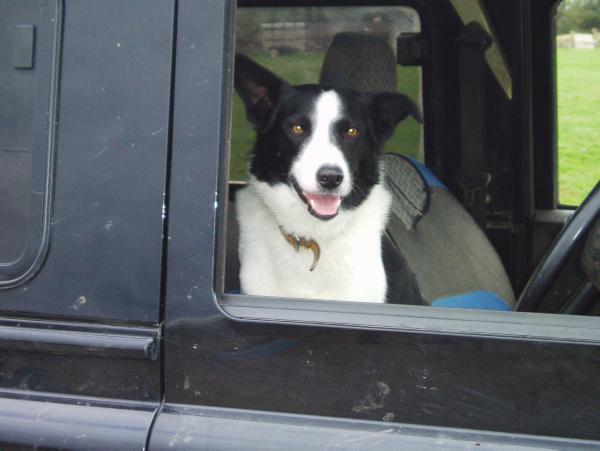




 This is a subscriber-only article
This is a subscriber-only article





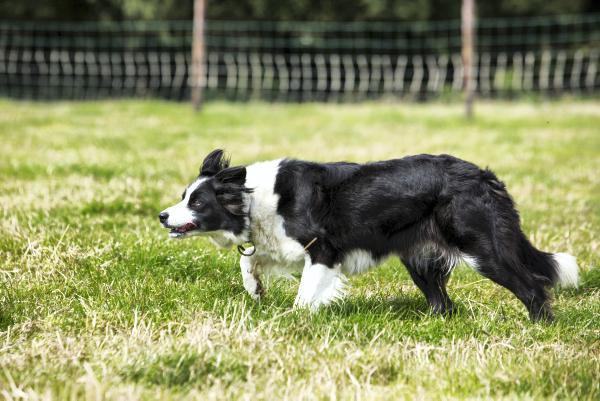


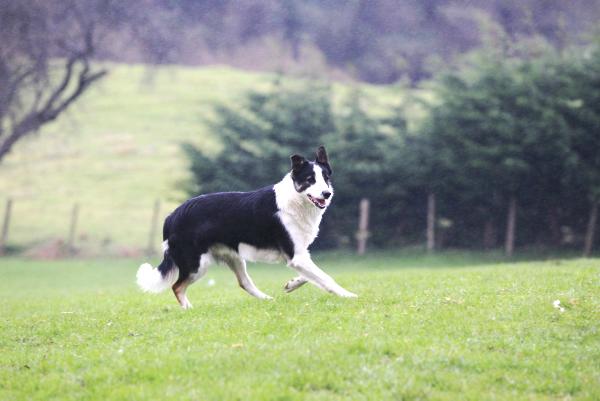
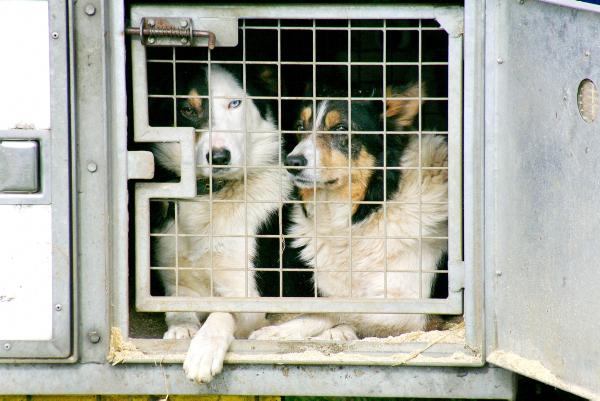

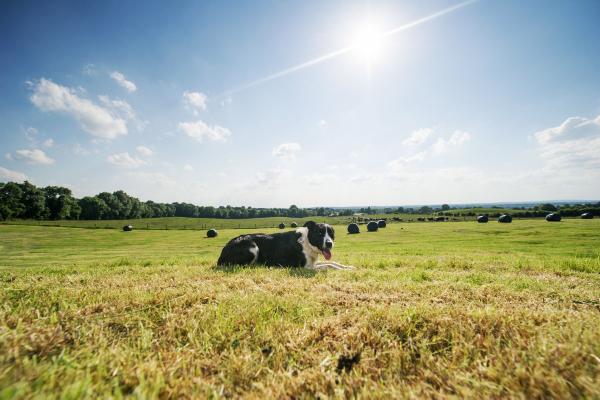

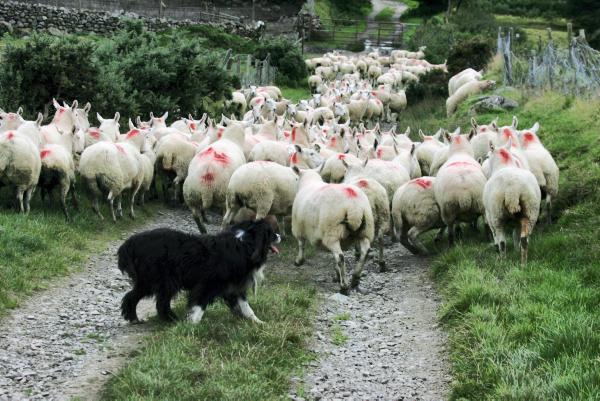

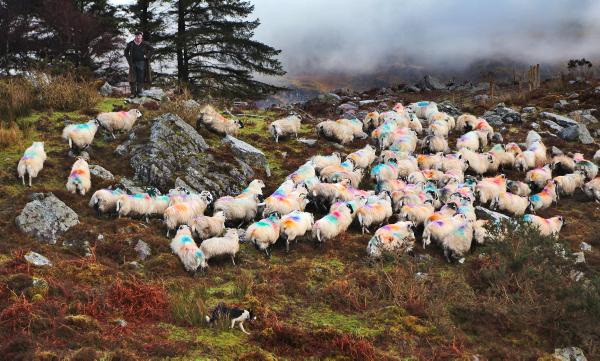

SHARING OPTIONS: